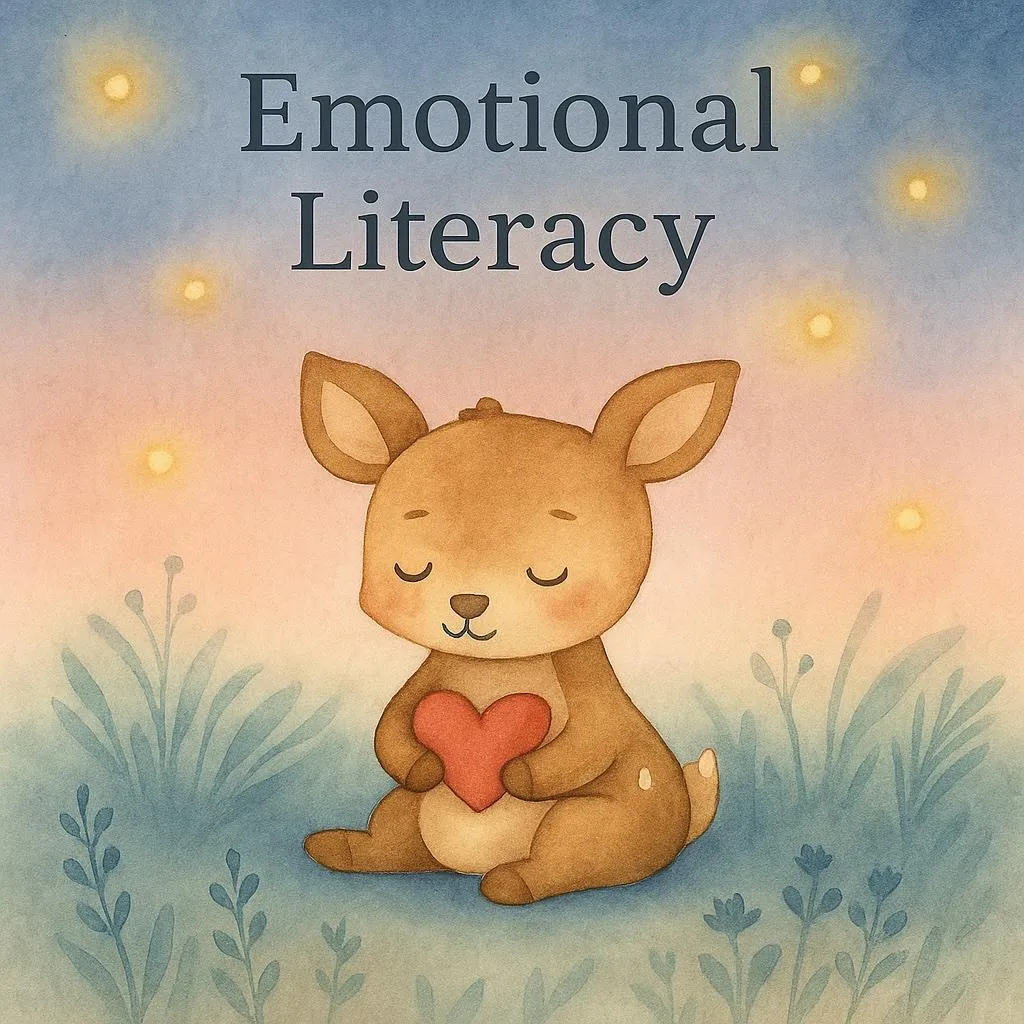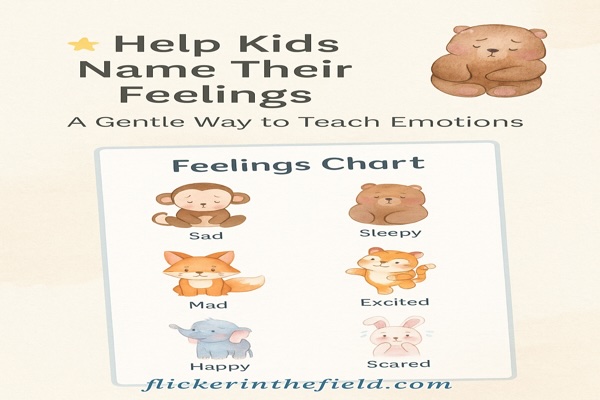
💛 “How to Help Kids Name Their Feelings” + Free Printable Starter Kit for Parents of 3–8 Year Olds

👉 [Sign up here to get the feelings starter kit]
“All behavior is communication.”
It’s a mantra I’ve repeated to myself for over a decade as a special education teacher working with emotionally disabled students. It’s helped me stay grounded during classroom chaos—helped me be the thermostat, not the thermometer. But doing this as a parent? That’s a whole different challenge.
Like the time my toddler had a full-blown meltdown in the middle of the Aldi aisle. She wanted to sit in the cart—but also push the cart—at the same time. Logic was gone. Screaming began. And I could feel eyes on me from every direction.
People were staring. Judging. Whispering. And there I was, getting down on the grocery store floor (grosssss), trying to meet her where she was. I asked her, “Can you find something pink? Something green? Something blue?” Little by little, her pointing turned to speaking. Slowly, she moved from her downstairs brain into her thinking brain.
“Are you frustrated?”
She nodded. Then, finally—she found the words.
Later, a couple of shoppers came up and told me I handled it beautifully. That I was so calm. So patient. What they didn’t know? This moment was the result of months of hard, messy work.
There had been toy-throwing, biting (hers, not mine), and tears on both sides. And yes, I may have used some not-so-calm words—definitely not highlight reel material for gentle parenting. 😅
We had to learn what feelings are. What they look like. And most importantly—how to name them.
And that’s when it hit me:
If I was struggling—someone trained in this, someone who teaches this every day—other parents must be drowning too.
That’s why I created tools like the feelings chart printable—to help families talk about emotions before they boil over. You don’t have to get it perfect. Just get on the floor (emotionally, not literally… unless Aldi happens), and try.
Big feelings in little bodies can feel overwhelming—for both kids and the grown-ups trying to help them. Whether it’s a meltdown over mismatched socks or quiet withdrawal after school, emotional moments are part of childhood. But when children don’t have the words to express what’s going on inside, those feelings can come out as frustration, fear, or total shutdown.
The good news? Helping kids name their feelings is the first step toward helping them manage them.
Why Naming Emotions Matters
According to child development research, when kids can name an emotion, they’re more likely to regulate it. It’s called “name it to tame it,” and it works because labeling a feeling activates the thinking brain—the part that helps with decision-making and calm.
In other words, when your child says, “I feel disappointed,” instead of throwing toys, they’re learning to process emotions in a safe, supported way.
How to Start Teaching Emotional Vocabulary
You don’t need to be a psychologist or a perfect parent to teach feelings. You just need a few consistent tools and a lot of patience. Here are 3 simple ways to begin:
1. Use a Feelings Chart
Visuals help children connect what they feel in their bodies to the right word. A printable emotions chart can turn a meltdown into a moment of connection. Hang it on the fridge or put it in your calm-down corner.
2. Model Your Own Feelings Out Loud
Kids learn most by watching us. Try saying:
“I’m feeling a little frustrated because I can’t find my keys.”
“I feel proud of you for getting dressed all by yourself!”
It normalizes emotion and shows that even adults feel things too.
👉 [Sign up here to get the feelings starter kit]
3. Read Stories That Highlight Emotions
Books are safe practice grounds for big feelings. At Flicker in the Field Books, I create characters like Lenny and Wally—part of my upcoming picture book series, The Place Where Feelings Live—to help kids explore their emotions through story. These characters are designed to give children a window into what different feelings look like—and how to handle them with confidence, empathy, and support.
Keep It Simple and Repetitive
The goal isn’t to get your child to use the word “overwhelmed” perfectly. It’s to build their emotional toolbox slowly, through repetition and real-life practice. Start with basic words: happy, sad, angry, scared, excited. Then layer in others like frustrated, worried, proud, lonely.
Final Thought
Teaching kids to name their feelings doesn’t happen in a day—but every time you pause, connect, and offer language, you’re planting seeds of emotional resilience that will grow for years.
You don’t have to fix every outburst or decode every mood swing. Just start by helping your child say, “I feel…”
You’re doing great. And you’re not alone.
👉 [Sign up here to get the feelings starter kit]
Inside, you’ll get:
A printable feelings chart
A coloring page from The Place Where Feelings Live
Simple tips for calming big emotions
Conversation starters to use with your child today
It’s everything I wish I had when I was having my not-so-gentle parenting reel.
